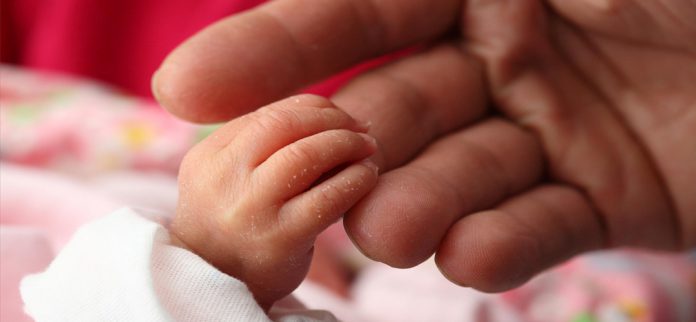I first had my suspicions that my child, who is now 2 years old had eczema when she was just a small baby. It was a hot summer day and she had developed these red rashes along the folds of her skin…behind the knees, behind the elbows, and even around the neck. These rashes would come and go… just when I thought they were gone, they would eventually recur. As a new mother, this was a cause of concern. At first I dismissed it as “bungang araw” a rash caused by the heat…but then I remembered that my own brothers and sisters suffered from eczema growing up. How uncomfortable they felt. How embarrassing it was for them to have rashes on their legs and at the backs for their necks. I was lucky not to have had it, but I remembered how much they suffered. And this is what prompted me to have my child checked by her pediatrician right away. I was worried about how eczema would affect my baby’s development.
When I brought my baby to my pediatrician, my fears were confirmed. My baby did have eczema, and my doctor provided us with treatment and guidelines on how to manage the eczema right away. While I did hear the word eczema often growing up, my understanding of it was very limited. My doctor took the time to discuss with with me, and patiently explained that Eczema is an inflammatory skin condition characterized by dry, itchy and red rashes that usually appear in the skinfolds of the body. While it is more commonly known as “asthma of the skin,” the more medically accurate name for it is atopic dermatitis. It is more common than we think, and worldwide, this disease affects 10-20% of children and 1-3% of adults.
The typical symptoms of eczema are the following: itchy, inflamed, red, dry and scaly rashes that become thick and leathery with constant scratching, dry skin, and a personal or family history of other allergic diseases or asthma. As a chronic disease, it was heartbreaking for me to learn that there was no real cure. Would my baby suffer from this forever? I thought that it was possible for her to outgrow it, just like my siblings did. Unfortunately, there will always be a possibility that one’s eczema might flare up. I started to worry about all the emotional and psychological suffering this would cause my child. Would she feel embarrassed about her rashes? Would the other kids bully her her? I was heartbroken.
Thankfully, our pediatrician also provided me with a lot of reassurance. When it comes to eczema, the key is management. Management comes in different forms, such as the avoidance of certain chemicals, or the application of lotion, or topical creams…but the important thing is, before buying medicines or performing home remedies, to consult the doctor. I was worried that the entire experience would traumatize my child, but it really was not as bad as I had anticipated. During the diagnosis, the doctor simply looks at the skin and asks questions.
A well known medical treatment for eczema is the use of a topical corticosteroid. Mometasone furoate (Elica) is a topical corticosteroid that can be purchased over-the-counter with a prescription from the doctor. As a mom, I was hesitant to use it because it is a steroid, but was assured that it is well-tolerated and is applied once a day. While it was created to be an effective treatment for reducing the symptoms of eczema, I know that it will go beyond clearing of my child’s rashes…sparing her of the feelings of insecurity and embarrassment that usually comes with them as she gets older. As a worried and anxious new mother, discovering that eczema can be managed give me the peace of mind I needed to know that my baby would be okay.
Catherine Santos is a work at home mom of 2 small children, ages 3 and 1. She writes for several online publications and dabbles in baking treats for her family when she isn’t cooking, cleaning, and organizing their home.
L.PH.MKT.CC.09.2017.0323 10/2017





